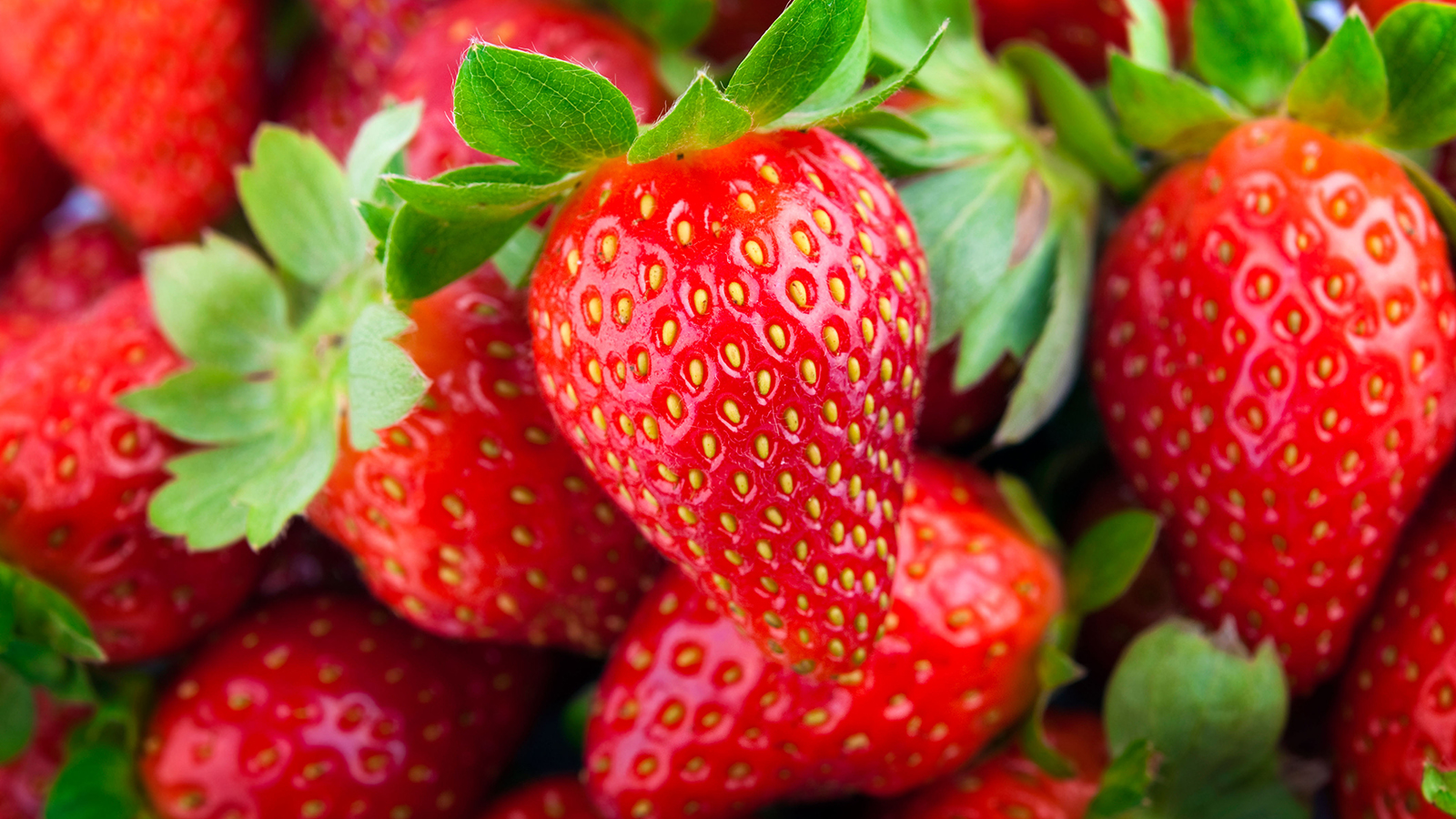How to Grow Bigger Strawberries: 5 Tips For A Luscious Crop
Grow the biggest, juiciest strawberries imaginable with this expert advice for maximizing your home harvest.

Melanie Griffiths

Strawberry shortcake, strawberry jam, strawberry ice cream, strawberry cheesecake. The list goes on. People around the globe are enamored with the fruit's juicy, sweet-tart flavor, jewel-like color, and intoxicating perfume. Why wouldn't you want to know how to grow bigger strawberries?
Learning how to grow strawberries is actually quite easy. You can plant them in a tiered strawberry pot with side pockets, or grow them in amended garden soil. Strawberries are very accessible plants with ease of care and bountiful harvests.
Tips For Growing Bigger Strawberries
These delightful fruits may find you wanting to grow bigger berries for maximum yields. Larger fruits result from certain cultivars bred for such a result but can also occur with superior care.
A note of caution, bigger doesn’t always mean better. Very often the smaller fruits, with their concentrated flavor, have the better taste. This is because bigger berries hold more water, essentially diluting the taste.
However, if you want to maximize the size of your crop, then these tips will help you along.

1. Choose Large Strawberry Varieties
The first option for growing bigger strawberries is to select a cultivar that is bred for larger fruit. Commercial berry growers spend considerable time and expense with breeding programs designed to create big fruit, with excellent transportability, and the best flavor.
There are many different types of strawberry plants to choose from. The berries may be everbearing strawberries that produce more than one crop, or they might be June-bearing strawberries, which come to fruition all at once with a vigorous, tasty harvest.
Sign up for the Gardening Know How newsletter today and receive a free copy of our e-book "How to Grow Delicious Tomatoes".
June-bearing fruits typically produce the largest berries and are classed as early, mid-season, and late-blooming varieties.
Everbearing strawberries need at least 12 hours of sun per day and do not start producing until the days are long. Many of these varieties produce successive crops until a frost.
Day-neutral strawberries produce large, firm fruits from summer into fall. These plants are considered hardy and will also produce until a first occurs.
Selecting a cultivar with disease resistance will avoid a lot of headaches and help to promote more vigorous growth.
Here's our pick of the bigger strawberry varieties to grow:
- Allstar: Perfectly formed berries with glossy skin in mid-season.
- Chandler: Large, firm fruits with glossy, red skin.
- Diamante: Big, deeply red classic fruits with shiny skin. These are often used for the treat-chocolate covered strawberries.
- Jewel: Huge berries with high, long season yield.
- Juliette: Large fruits with cone shaped berries.
- Ozark Beauty: Very sweet for an everbearing variety.
- Sundrench: Early fruits with pointed ends and classic berry flavor.
- Surecrop: Irregular shaped berries but with superior flavor.
2. Cultivate The Right Growing Conditions
Plant strawberries in the ground in early spring or fall. Good, well-draining, loamy soil with a soil pH between 5.5 and 6.8 is the best situation. Work in well-rotted manure or compost into the top few inches of the bed.
These fruits produce runners and expand as they mature, so leave plenty of space between plants.
Early-season berries need 6-8 hours of sunlight, while everbearing varieties need a full day of sun for optimum production.
When watering strawberries, set up a drip irrigation system to keep the plants moist while avoiding wet leaves, which can lead to fungal disease.
Mulching strawberries will help to deter weeds, keep soil cool, and retain moisture.

3. Boost Growth Through Fertilizing
Typically, fertilizing strawberries should be done in spring, and again as the berries begin to appear.
A balanced 10-10-10 granular fertilizer that is time release will feed the plant all season if applied in spring. This option is excellent for container-grown fruits.
Some gardeners claim using a potassium-rich fertilizer during flowering and fruiting will boost the size and number of the berries.
Organic options for feeding strawberries are bone meal, rock phosphate, kelp meal, soybean meal, and blood meal. Work these into the soil gently to avoid disturbing the roots and runners. The first two items are high in phosphorus and calcium and help promote flowering and fruiting.
4. Remove The Runners
Culture and cultivar selection can help get bigger fruits, but there is one tip that is even more important: remove the runners.
After the plants have established for a year, remove runners during flowering. This is because the plant is trying to establish more plants, but it is expending energy in doing so.
Snip or pinch off the runners to keep all the energy in the mother plant for fruit production. This simple practice will result in not only more yield, but bigger berries.
5. Nurture Plants To Maturity
Young plants will only produce small berries, while mature plants will provide larger fruit.
In the first year, many gardeners opt to pinch off the strawberry flowers, rather than allow them to fruit. This allows plants to put their energy into producing a better crop the following year.
With a little patience, it won't be long before you are feasting on the biggest, juiciest crop of strawberries imaginable.

Bonnie Grant is a professional landscaper with a Certification in Urban Gardening. She has been gardening and writing for 15 years. A former professional chef, she has a passion for edible landscaping.
- Melanie GriffithsEditor in Chief